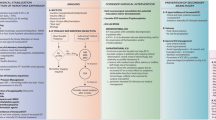Abstract
Introduction: Up to 40% of primary intracerebral hemorrhages (ICHs) expand within the first 24 hours (natural history). The authors aimed to study the safety and preliminary efficacy of ɛ-aminocaproic acid (EACA) in halting ICH enlargement.
Methods: Consecutive patients with hematoma volumes ranging from 5 to 80 mL were recruited within 12 hours of ICH onset. A total of 5 g EACA was infused during 1 hour and then 1 g/hour for 23 hours. Hematoma volume was compared onbaseline, and 24–48-hour brain imaging. Consecutive untreated patients underwent the same imaging protocol.
Results: Three of the first five patients treated had HE>33% of their baseline volume. HE occurred in two of the nine untreated patients. The 80% confidence interval for HE in the treated patients was 32–88%. No thrombotic or other serious adverse events were attributed to EACA.
Conclusion: It is unlikely that the rate of HE in patients given EACA within 12 hours of ICH is less than the natural history rate, although this treatment appears to be safe.
Similar content being viewed by others
References
Brott T, Broderick J, Kothari R, et al. Early hemorrhage growth in patients with intracerebral hemorrhage. Stroke 1997;28:1–5.
Hanel RA, Xavier AR, Mohammad Y, Kirmani JF, Yahia AM, Qureshi, AI. Outcome following intracerebral hemorrhage and subarachnoid hemorrhage. Neurol. Res. 2002;24(Suppl 1): S58-S62.
Morgenstern LB, Demchuk AM, Kim DH, Frankowski RF, Grotta JC. Rebleeding leads to poor outcome in ultra-early craniotomy for intracerebral hemorrhage. Neurology 2001;56:1294–1299.
Lisk DR, Pasteur W, Rhoades H, Putnam RD, Grotta, JC. Early presentation of hemispheric intracerebral hemorrhage: prediction of outcome and guidelines for treatment allocation. Neurology 1994;44:133–139.
Kassell NF, Torner JC, Adams HP, Jr. Antifibrinolytic therapy in the acute period following aneurysmal subarachnoid hemorrhage: preliminary observations from the Cooperative Aneurysm Study. J. Neurosurg. 1984;61:225–230.
Kothari RU, Brott T, Broderick JP, et al. The ABCs of measuring intracerebral hemorrhage volume. Stroke 1996;27:1304–1305.
Mayer SA. Ultra-early hemostatic therapy for intracerebral hemorrhage. Stroke 2003;34:224–229.
Author information
Authors and Affiliations
Corresponding author
Rights and permissions
About this article
Cite this article
Piriyawat, P., Morgenstern, L.B., Yawn, D.H. et al. Treatment of acute intracerebral hemorrhage with ɛ-aminocaproic acid. Neurocrit Care 1, 47–51 (2004). https://doi.org/10.1385/NCC:1:1:47
Issue Date:
DOI: https://doi.org/10.1385/NCC:1:1:47




